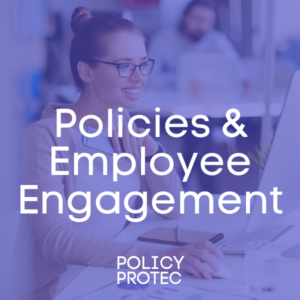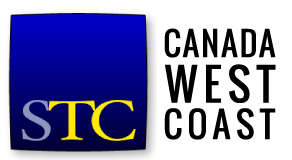 On March 23, 2022, policy writer Murray Whitby shared his insights in a webinar, “How Policies Can Undermine Employee Engagement and How to Fix It.” Murray is the president of Policy Protec, the company he founded in 2018, and a member of CPHR (Chartered Professionals in Human Resources) Alberta, with a background in human resources and a long corporate career serving in many executive roles.
On March 23, 2022, policy writer Murray Whitby shared his insights in a webinar, “How Policies Can Undermine Employee Engagement and How to Fix It.” Murray is the president of Policy Protec, the company he founded in 2018, and a member of CPHR (Chartered Professionals in Human Resources) Alberta, with a background in human resources and a long corporate career serving in many executive roles.
He started by pointing out that people do not read policies; they refer to them. When written effectively, policies can drive employee engagement, which in turn helps organizations accomplish their goals.
What is a policy and why is it important?
Policies are rules created by an organization to achieve four main objectives:
• Regulatory compliance
• Risk control
• Operational effectiveness and consistency
• Worker performance and engagement
Why is employee engagement important?
The Blessingwhite X Model of Engagement is one example that demonstrates the importance of employee engagement. When employees are fully engaged, they are applying their best efforts in achieving their organization’s goals and their own personal goals. This model provides a map of the different types of employee engagement, prompting us to consider how policies can engage or hinder employees.
What do policy writers need to consider about today’s work environment?
Today’s work environment is full of increased complexity for both leadership and employees. People, ideas, and information move at a quicker pace and expectations have increased. Especially during the pandemic, the need for a flexible and distributed workforce has become more relevant. Equity, diversity, inclusivity, and Indigenous relations have also come to the forefront. To empower and engage employees, policies need to consider the values, needs, and challenges all employees face.
How do policies hinder employee engagement?
Some policies are written in a superior tone with authoritarian language; nothing disengages a reader more than being told what to do in that manner.
Some policies use complicated formatting intended to increase clarity, focus, or understanding; however, the extra clutter makes them harder to read.
How can you edit or reformat policies to increase engagement?
- To make policy documents easier to read, replace paragraphs of prose with a two-column template using bulleted lists.
- To reduce clutter, remove distractions such as:
–Bold, all capitals, and underlining
–Boxed content
–Thick black lines
–Policy numbers and multilevel paragraph numbering
- Be clear and respectful. Use matter-of-fact, neutral, or positive language. Policy is not meant to be authoritarian.
–Use “required” or “expected” instead of “mandatory.”
–Use “permitted” instead of “optional.”
–Use “not permitted” instead of “prohibited.”
- Remove pseudo-legalese language such as “shall” or “hereby.” Policies are rules, not laws.
- Clean up wishy-washy language.
–Use the present tense.
–Use clear language to build an employee’s confidence in the policies.
–Avoid using “should,” which implies a suggestion.
Do you need a total policy overhaul?
If it’s unclear whether you’re looking at a policy, procedure, or guidance document, it may be time to start from scratch. Distinguish between the three types of documents, to provide clarity and organization. Employees feel more engaged if it’s clear what they are looking at and what they need to refer to.
Policies are the rules. A list-based policy template is easier to write, edit, read, change, and update.
Procedures are the how-to manuals. There are three types: administrative, operating, and emergency response.
Guidance documents give more context and help. They provide more information that doesn’t fall within a policy or procedure document.
Missed the meeting?
Register to receive a link to the recorded webinar!
STC members and students: Register here.
Non-members: Register here.
